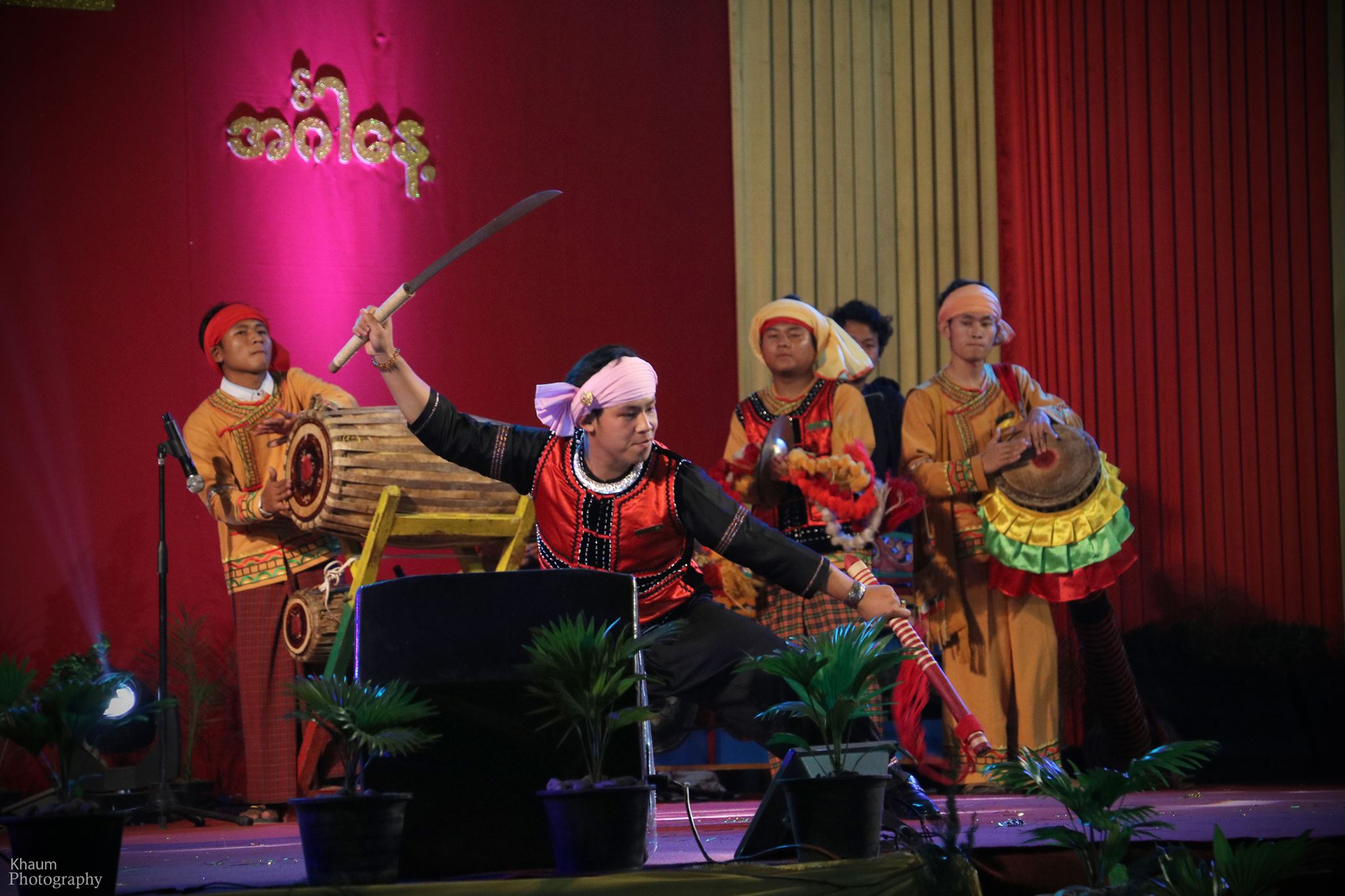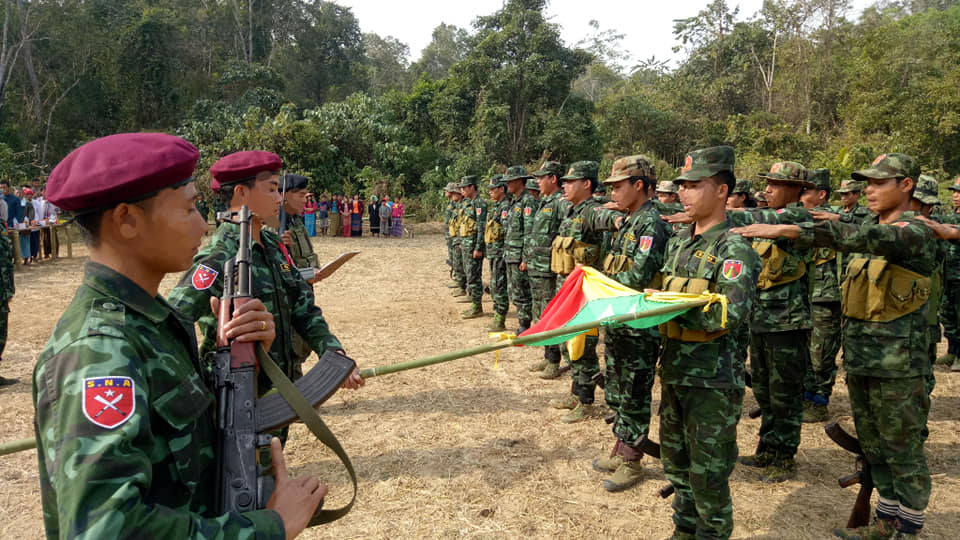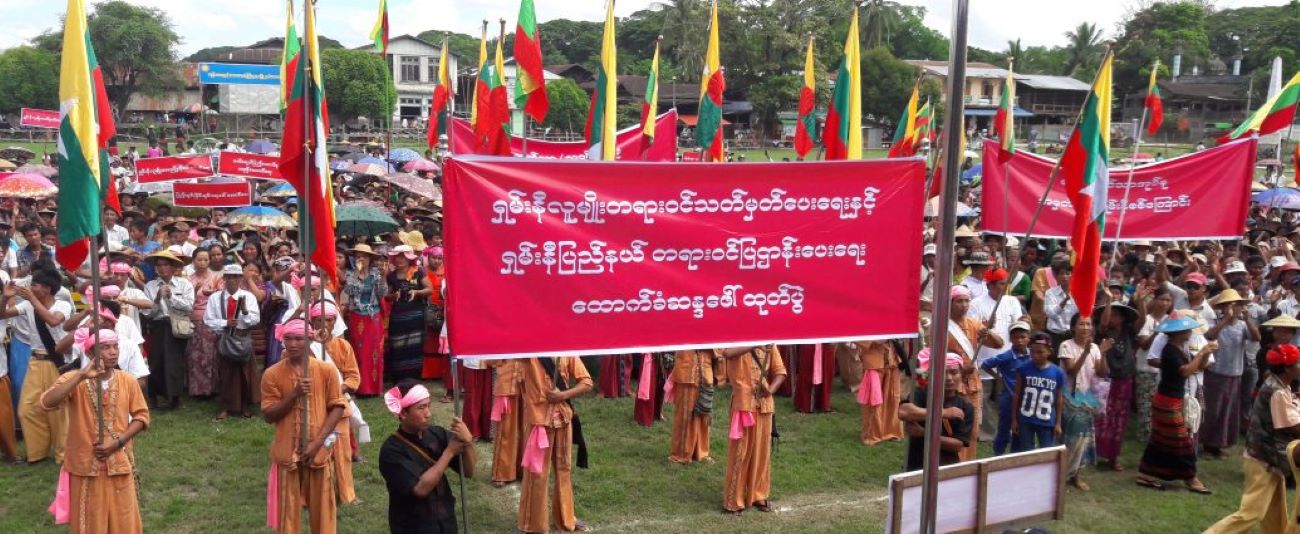CNI News
26 Jan 2023
Shanni people should have their own state, Central Counil Member of the Shanni Nationalities Council Say Wun Pha told the CNI.
He said they would demand their lost rights to the current government.
He said, "The aim of forming the SNNC is not only to establish Shanni State or Shanni Self-administered Division. Ours is an organization that will implement projects that will bring development and common goals for the entire Shanni people. We will demand our lost rights and statehood to the current government and then submit our demands to the new union parliament depending on whether the current government agrees to our plans or not. In doing so, we are cooperating with working committees comprising representatives of respective regions."

Shanni sword dance.
Under section 6 of the 1947 constitution, Shanni territories such as Myitkyina, Mohnyin and Bhamaw districts were included in Kachin State despite the rejection from the Shanni people.
Similarly, the remaining Shanni territories like Kalay, Hkamti, Mawlike, Ktathar and Tamu districts were included in Sagaing Region under the 1974 constitution, according to Shanni people.
Shanni people have their own right to form their state but will not be allowed to change geogrophical positions without the consent of Kachin people, Kachin Politician U Kwan Gaung Aung Hkam told the CNI.
He said, "Not only Shanni people but also other ethnic groups are entitled to demand statehood at complete freedom. However, I said at the 2016 peace conference of the Kachin State that I would not accept the changing of the name and geographical positions of the areas without the consent of the Kachin people. I have the same point of view now. Everything must be in accordance with the will of the Kachin people."

The flag of the Shanni people.
Patron U Shwe Min of the Lisu National Development Party told the CNI that he would not support the 8-state solution and Shanni people were demanding their legitimized rights.
He said, "We need to look at the current situation on the ground and review the history, how states emerged and which ethnic groups mainly reside in certain regions. As their areas where their forefathers resided for aeons were designated as territories of other states, we understand how they are suffering. I don't have any other comments on the development of the Shanni people. The emergence of the Shanni State should be stated in the new constitution."
The Shanni people mainly reside in the upper Sagaing Region and Kachin State and as they have the same language and culture, it will not be difficult to unify them, Say Wun Pha said.

Troops of Shanni National Army.
He said, "Our people resided and established city states in the wide areas even before the emergence of Kachin State and Sagaing Region. We are siblings. Although we are included in different regions and states. However, we share the same tradition, language, culture and values. In other words, we have the common desire for self-determination. So, I have never thought of difficultes for establishing our state."
About 1 million Shanni people live in Kachin State and Sagaing Region and they have officially demanded statehood at the 21st Century Panglong Conference.
Shanni National Army is trying to establish Shanni State made up of Mawlike, Kalay, Hkamti, Katha and Tamu districts in Sagaing Regions and Bhamaw, Myitkyina, Mohnyin and Mokaung districts in Kachin State.




